I’ve lost count of the number of Japanese people I’ve met who were disappointed to find out I don’t have what they consider quintessential American eating habits. The last time I had a steak was a year ago. I’m perfectly happy eating rice, and I love fish, since, you know, I grew up in California, which is a coastal state (same ocean as Japan has, too).
But there’s one stereotype I do conform with, and that’s how much I love milk, despite being a full-grown adult. Many Japanese people, on the other hand, associate the drink with their childhood, since it’s been served in elementary schools for decades.
One city in Niigata Prefecture, though, has decided it has no more tolerance for drinkable lactose, and starting this month, is removing milk from its school lunches.
While a corner of unused agricultural land anywhere in the country is a prime candidate for being turned into a rice paddy, Niigata is especially fond of Japan’s favorite grain. Not only is the prefecture Japan’s second largest producer of rice, its flavor is highly praised, especially the strain known as Koshihikari.
▼ That’s some nice rice.
Figuring if they were surrounded by so many high-quality crops, they may as well use them, six years ago the elementary schools of Niigata’s Sanjo City reevaluated their school lunches, eventually deciding to phase out breads and noodles, and replace them with locally grown rice. Along with this switch came an increased focus on Japanese-style dishes and sides, such as fish, stewed meats and vegetables, and miso coup.
▼ A Sanjo school lunch
We’ll admit, that sounds a lot more gourmet than tater tots and chicken nuggets. But while parents seem generally pleased with what their kids have been eating at school for the past six years, some of them have been complaining about what their kids have been drinking: milk.
The issue doesn’t seem to be so much that parents think milk itself is bad for kids. It simply doesn’t go well with the flavor of Japanese food, says the most vocal group opposing milk in school lunches.
Enough members of the Sanjo Board of Education agreed that on December 1, the 30 city-run elementary schools in the town have stopped distributing packs of milk with students’ lunches. Currently, it’s only a temporary, four-month initiative, set to end with the Japanese school year next spring. Depending on the results of the trial period, however, the board may decide to make the switch permanent.
Although most of the lunch entrees are Japanese, some, such as pork cutlet and Szechuan-style pork, originate in western or Chinese cooking. Almost all are served with miso soup, though, which was singled out by some parents as an especially odd thing to pair with milk.
▼ We’re guessing they’ve never tried miso curry milk ramen.
Strangely enough, while some are against serving milk because they don’t think it’s an enjoyable compliment to the meal, others are worried about kids drinking too much milk with their Japanese-style food. Each pack contains 200 milliliters (6.8 ounces) of milk, and the anti-dairy camp says that’s space in the children’s stomachs that would be better occupied by bigger portions of nutritious rice or entrees.
That stance is a bit simplistic, though, because it assumes that milk doesn’t have any nutritional value. Most prominently, it’s a fantastic source of calcium, and several nutritionists are worried about Sanjo’s new school lunches contributing to deficiencies among pupils. They cite the importance of calcium in warding off conditions such as osteoporosis, and point out that it’s vital during childhood, as a lack of the nutrient can result in poor bone density, a serious problem that can be difficult to address after finishing puberty.
The Japan Dietetic Association is also backing milk advocates. In a statement, the organization emphasized that many children don’t receive sufficient amounts of calcium in the diets at home, and that school lunch milk plays a vital role in addressing this problem.
Traditional Japanese cuisine is healthy in many ways, but pretty calcium-poor, which is why my host dad used to encourage me to eat fish bones.
In response, the Board of Education is considering a number of countermeasures. The simplest ideas are to just serve more food each day, or to designate a day of the week in which the children are given meals that contain extra high quantities of protein or calcium. There’s also what would probably be the kid-pleasing proposal of having the kids make and eat dairy-based desserts once a week, but once you weigh the negatives of eating sweets against the positives of getting more calcium, nutritionally, it’s kind of a wash.
Although if our schools had taught it, you can bet our favorite subject would have been “cake.”
There’s one more positive those in favor of getting rid of milk permanently point to. Earlier this year, Japan’s consumption tax jumped from five to eight percent, meaning just about everything in the country suddenly got more expensive. Sanjo budgets 250 yen (US $2.20) for its elementary school lunches, and a pack of milk eats up one fifth of that amount. We’re not sure how the savings from cutting out milk offset against the potential extra costs from increasing the portions of rice and other foods, but still, having an extra 50 yen to work with is, taken strictly by itself, a good thing.
Unless, of course, you were counting on that 50 yen per student to keep your business going. Niigata’s Harada Milk was founded in 1887, and has been a major supplier to Sanjo’s elementary schools, previously providing 8,000 packs a day. Multiplied out over the course of four months of school, the company expects to lose some 22 million yen (US $191,000) of revenue as a result of the new lunch policy.
▼ It looks like Harada Milk and its employees are in for a long, cold winter.
President Haruo Harada is hoping milk makes a return to Sanjo schools once the test period is over. “Both dairy farmers and milk processors rely on the demand from school lunches to keep their doors open,” he said.
Right now, the kids themselves seem divided over how they feel about not having any milk. Some who didn’t care for it are glad to see it gone, while others have expressed hope that it comes back soon, especially since some schools have reportedly offered absolutely nothing as a beverage in exchange.
Either way, though, Sanjo’s schools are milk-free until the spring, at least. In the meantime, if Harada or any other dairy farmers are looking for new business opportunities, we could really use some butter.
Source: Naver Matome
Insert images: Niigata Kankou, Kenoh, RocketNews24, Harada Milk

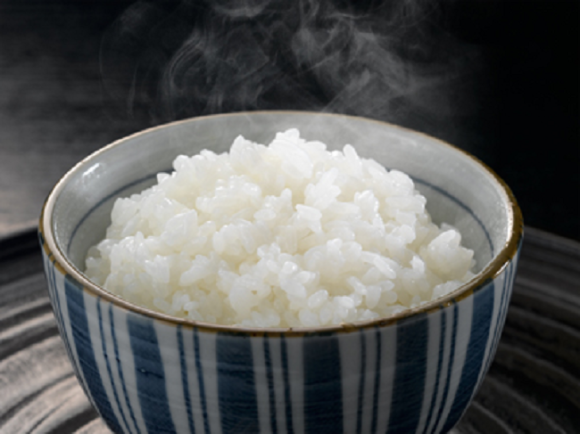
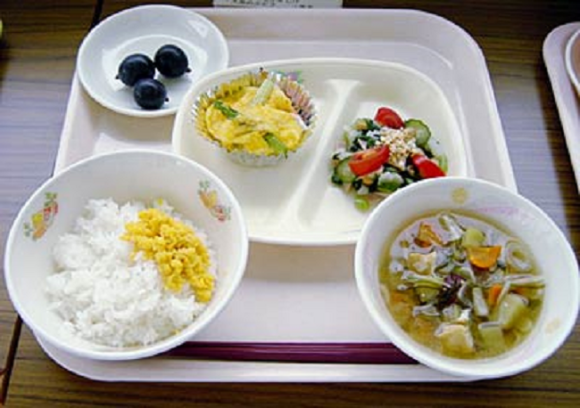
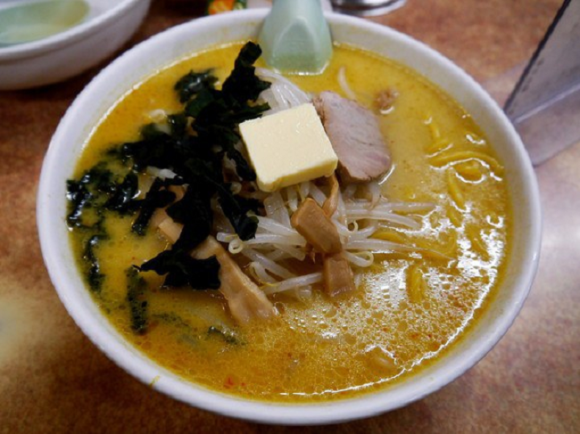
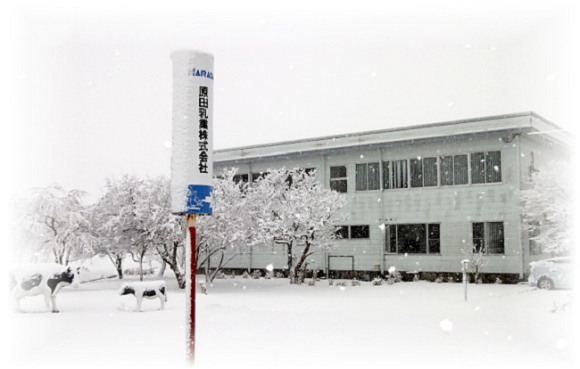
 In Japanese elementary schools, lunchtime means serving classmates, cleaning the school 【Video】
In Japanese elementary schools, lunchtime means serving classmates, cleaning the school 【Video】 Top 10 Japanese school lunch food items that adults miss the most
Top 10 Japanese school lunch food items that adults miss the most Japanese PM’s call to drink more milk successful, mass disposal averted
Japanese PM’s call to drink more milk successful, mass disposal averted Hi-Chew releases new Japanese School Lunch flavor to stimulate appetites and nostalgia
Hi-Chew releases new Japanese School Lunch flavor to stimulate appetites and nostalgia Our Japanese reporter’s encounter with American school lunch
Our Japanese reporter’s encounter with American school lunch We revisited Sweets Paradise after a decade to see if Japan’s dessert buffet still delivers
We revisited Sweets Paradise after a decade to see if Japan’s dessert buffet still delivers The best Starbucks Japan Frappuccinos we want to drink again in 2026
The best Starbucks Japan Frappuccinos we want to drink again in 2026 Hayao Miyazaki says Happy New Year to Studio Ghibli fans with new art for Year of the Horse
Hayao Miyazaki says Happy New Year to Studio Ghibli fans with new art for Year of the Horse Beautiful Studio Ghibli photo frames let you put yourself in the worlds of Totoro and Kiki【Pics】
Beautiful Studio Ghibli photo frames let you put yourself in the worlds of Totoro and Kiki【Pics】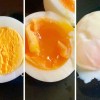 We tried a Japanese egg steamer to achieve the perfect breakfast eggs without a stove
We tried a Japanese egg steamer to achieve the perfect breakfast eggs without a stove Godzilla Store crushes New Year with king of the 2020 fukubukuro lucky bags
Godzilla Store crushes New Year with king of the 2020 fukubukuro lucky bags New retro museum in Tokyo is like a time portal back to the Showa era【Photos】
New retro museum in Tokyo is like a time portal back to the Showa era【Photos】 Starbucks Japan ready to get Year of the Horse started with adorable drinkware and plushies【Pics】
Starbucks Japan ready to get Year of the Horse started with adorable drinkware and plushies【Pics】 Is China’s don’t-go-to-Japan warning affecting tourist crowds in Shibuya’s Don Quijote?
Is China’s don’t-go-to-Japan warning affecting tourist crowds in Shibuya’s Don Quijote? You can now buy a Japanese train station clock in Japan
You can now buy a Japanese train station clock in Japan 7-Eleven Japan’s ramen-cooking robot whipped us up a bowl of noodles【Taste test】
7-Eleven Japan’s ramen-cooking robot whipped us up a bowl of noodles【Taste test】 Cyberpunk anime meets traditional culture in Ghost in the Shell gold leaf Japanese changing screens
Cyberpunk anime meets traditional culture in Ghost in the Shell gold leaf Japanese changing screens 7 great places to see Mt. Fuji from without having to climb it
7 great places to see Mt. Fuji from without having to climb it Hello Kitty Choco Egg figures are an adorable trip through three periods of Japanese pop culture【Pics】
Hello Kitty Choco Egg figures are an adorable trip through three periods of Japanese pop culture【Pics】 Japan’s otoshidama tradition of giving kids money at New Year’s gets a social welfare upgrade
Japan’s otoshidama tradition of giving kids money at New Year’s gets a social welfare upgrade We found possibly the quietest Japanese-style hotel in Tokyo’s bustling Shinjuku district
We found possibly the quietest Japanese-style hotel in Tokyo’s bustling Shinjuku district Lacquerware supplier to emperor of Japan and Pokémon team up for new tableware
Lacquerware supplier to emperor of Japan and Pokémon team up for new tableware Sumo Sanrio! Hello Kitty and pals team up with Japan Sumo Association for new merch【Pics】
Sumo Sanrio! Hello Kitty and pals team up with Japan Sumo Association for new merch【Pics】 Can a dirty butthole make you filthy rich in Japan? We’re starting a New Year’s lottery experiment
Can a dirty butthole make you filthy rich in Japan? We’re starting a New Year’s lottery experiment 7-Eleven Japan starts new temporary luggage storage service in over 300 branches
7-Eleven Japan starts new temporary luggage storage service in over 300 branches Disillusionment at Tsukiji’s tourist-target prices led us to a great ramen restaurant in Tokyo
Disillusionment at Tsukiji’s tourist-target prices led us to a great ramen restaurant in Tokyo Starbucks teams up with 166-year-old Kyoto doll maker for Year of the Horse decorations【Photos】
Starbucks teams up with 166-year-old Kyoto doll maker for Year of the Horse decorations【Photos】 Tokyo considering law requiring more trash cans following litter increase in heavily touristed area
Tokyo considering law requiring more trash cans following litter increase in heavily touristed area Tokyo’s Tsukiji sushi neighborhood asks tour groups to stay away for the rest of the month
Tokyo’s Tsukiji sushi neighborhood asks tour groups to stay away for the rest of the month Nintendo’s Kirby now delivering orders at Kura Sushi restaurants, but not in Japan
Nintendo’s Kirby now delivering orders at Kura Sushi restaurants, but not in Japan Tokyo event lets you travel back in time, for free, to celebrate 100 years since Showa era start
Tokyo event lets you travel back in time, for free, to celebrate 100 years since Showa era start Sanrio theme park in Japan announces plans to expand into a Sanrio resort
Sanrio theme park in Japan announces plans to expand into a Sanrio resort Japan may add Japanese language proficiency, lifestyle classes to permanent foreign resident requirements
Japan may add Japanese language proficiency, lifestyle classes to permanent foreign resident requirements Survey asks foreign tourists what bothered them in Japan, more than half gave same answer
Survey asks foreign tourists what bothered them in Japan, more than half gave same answer Japan’s human washing machines will go on sale to general public, demos to be held in Tokyo
Japan’s human washing machines will go on sale to general public, demos to be held in Tokyo Japan’s deadliest food claims more victims, but why do people keep eating it for New Year’s?
Japan’s deadliest food claims more victims, but why do people keep eating it for New Year’s? We deeply regret going into this tunnel on our walk in the mountains of Japan
We deeply regret going into this tunnel on our walk in the mountains of Japan Studio Ghibli releases Kodama forest spirits from Princess Mononoke to light up your home
Studio Ghibli releases Kodama forest spirits from Princess Mononoke to light up your home Major Japanese hotel chain says reservations via overseas booking sites may not be valid
Major Japanese hotel chain says reservations via overseas booking sites may not be valid Put sesame oil in your coffee? Japanese maker says it’s the best way to start your day【Taste test】
Put sesame oil in your coffee? Japanese maker says it’s the best way to start your day【Taste test】 No more using real katana for tourism activities, Japan’s National Police Agency says
No more using real katana for tourism activities, Japan’s National Police Agency says Starbucks Japan reveals new sakura drinkware collection, inspired by evening cherry blossoms
Starbucks Japan reveals new sakura drinkware collection, inspired by evening cherry blossoms Updated cherry blossom forecast shows extra-long sakura season for Japan this year
Updated cherry blossom forecast shows extra-long sakura season for Japan this year School Lunch in Japan 【You, Me, And A Tanuki】
School Lunch in Japan 【You, Me, And A Tanuki】 Convenience store fried chicken going into school lunches in Japan for Family Mart anniversary
Convenience store fried chicken going into school lunches in Japan for Family Mart anniversary Why are some Japanese preschools banning awesome, adorable character bento?
Why are some Japanese preschools banning awesome, adorable character bento? “How I learned to stop worrying and eat Japanese school lunches,” by P.K. Sanjun
“How I learned to stop worrying and eat Japanese school lunches,” by P.K. Sanjun
Leave a Reply